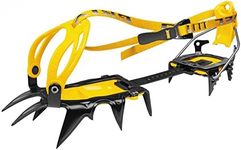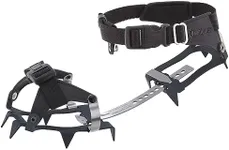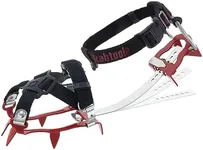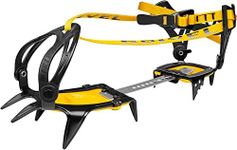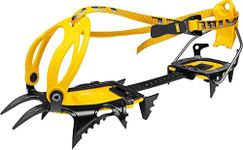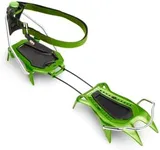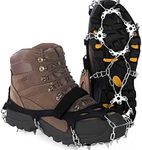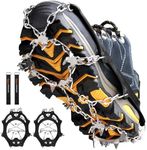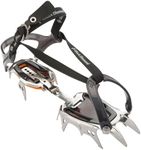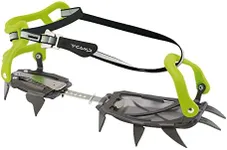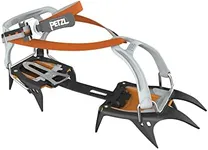Buying Guide for the Best crampons
Choosing the right crampons is essential for ensuring safety and performance during your mountaineering, ice climbing, or hiking adventures. Crampons are designed to provide traction on ice and snow, and selecting the right pair involves understanding your specific needs and the conditions you'll be facing. Here are some key specifications to consider when picking the best crampons for you.Type of CramponsCrampons come in different types, including strap-on, hybrid, and step-in. Strap-on crampons are versatile and can fit most boots, making them ideal for general hiking and non-technical mountaineering. Hybrid crampons combine features of both strap-on and step-in, offering a balance of security and ease of use, suitable for moderate technical climbs. Step-in crampons provide the most secure fit and are best for technical ice climbing and steep terrain. Choose the type based on the activities you plan to undertake and the compatibility with your boots.
MaterialCrampons are typically made from steel, stainless steel, or aluminum. Steel crampons are durable and ideal for technical climbing and mixed terrain, as they can withstand rough conditions. Stainless steel crampons offer similar durability with added corrosion resistance, making them suitable for wet environments. Aluminum crampons are lightweight and best for ski touring or less technical routes where weight savings are crucial. Consider the terrain and conditions you'll be facing to determine the best material for your needs.
PointsCrampons usually have 10 or 12 points, which are the spikes that provide traction. 10-point crampons are lighter and suitable for general mountaineering and less technical routes. 12-point crampons offer better stability and grip on steep and icy terrain, making them ideal for technical climbing and challenging conditions. Assess the difficulty of your intended routes to decide whether you need the extra traction provided by 12-point crampons.
Anti-balling PlatesAnti-balling plates are designed to prevent snow from sticking to the bottom of your crampons, which can reduce traction and increase the risk of slipping. These plates are particularly important in wet or variable snow conditions. Most modern crampons come with anti-balling plates, but it's essential to ensure they are included or can be added if you plan to hike in such conditions.
Binding SystemThe binding system of crampons determines how they attach to your boots. There are three main types: strap-on, hybrid, and step-in. Strap-on bindings use straps to secure the crampons to your boots and are compatible with most footwear. Hybrid bindings use a combination of straps and a heel lever, providing a more secure fit for boots with a heel welt. Step-in bindings require boots with both a toe and heel welt and offer the most secure attachment, ideal for technical climbing. Choose the binding system based on your boot compatibility and the level of security you need.
WeightThe weight of crampons can affect your overall performance, especially on long expeditions. Lighter crampons are easier to carry and can reduce fatigue, making them suitable for less technical routes and ski touring. Heavier crampons, while more cumbersome, offer greater durability and stability, which is crucial for technical climbing and challenging conditions. Consider the balance between weight and durability based on the length and difficulty of your trips.

